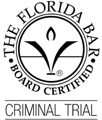You’ve probably heard of money laundering – the act of “cleaning” cash obtained from illegal activities to avoid detection from law enforcement. Similarly, the infraction of money structuring entails breaking large monetary transactions into many small transactions to avoid federal reporting requirements.
In both instances, the criminal act circumvents the government’s ability to track financial transactions and the source of income, according to federal law. These offenses can result in substantial penalties like hefty fines, forfeiture of assets, restitution, and jail time.
If you have been accused of money laundering or federal structuring, it is critical that you retain expert legal counsel right away.
Phases of Money Laundering
Typically, there are three phases to the laundering of money:
Placement
- Foreign Bank Accounts – This is the physical act of taking small amounts of cash abroad, below the threshold for customs declaration, lodging it in foreign bank accounts, then sending it back to the country of origin.
- Trusts & Offshore Companies – These are used to conceal the owner’s identity.
- Cash Businesses – These businesses add the money gained from criminal activities to legal ones. This usually works best in companies with little or no variable costs, such as car parks, strip clubs, tanning salons, casinos, and car washes.
- Phony Invoicing – This involves creating and submitting fake invoices to match the cash exchanged as a payment settlement.
- Smurfing – “Smurfs” make multiple deposits into many accounts at various financial institutions. The illegal cash entering the financial system this way is then accessible for layering.
- Aborted Transactions – A lawyer or accountant holds their client’s cash in an account to settle a future transaction. After a short period, the transaction is aborted, and the funds are paid back from a seemingly legal source.
Extraction
Once money has been “laundered,” criminals need to extract it without drawing the attention of law enforcement or tax authorities. To do this, offenders may pay legitimate payroll and other taxes. Here are some of the ways criminals utilize this:
- Bogus Employees – This is usually paid in cash and then collected
- Loans – These are paid to shareholders or higher-ups and will not be repaid
- Dividends – These are paid to shareholders of companies the criminals control
Layering
This involves using placement and extraction repeatedly in varying amounts of cash to make the transactions’ tracking imperceptible.
Related> What Are Federal Conspiracy Charges?
What Are Examples of Money Laundering & Structuring Schemes?
There are several ways that money can be laundered or that transactions can be structured that are violations of federal law. A few of the most common are discussed below:
-
Real Estate
Among the most typical money laundering schemes is purchasing real estate through an LLC or a limited liability company. LLCs are business structures that can merge the pass-through taxation of a sole proprietorship/partnership with the limited liability of a corporation.
Anyone who attempts to launder money in this manner might purchase real estate through an LLC using illegal funds, then immediately flip the home. The proceeds now look like they have come from a legitimate source rather than illicit activities. This makes it more difficult for law enforcement to trace the money to the illegal activity.
-
Electronic Money Laundering
Alternative financial solutions like PayPal, Bitcoin, Dwolla, and payments made through mobile devices, like Venmo, have made it easy to exchange money without going through traditional banking systems. Therefore, those attempting to launder money can easily disguise the original criminal source of the income. And this makes tracing money back from illegal activities much more difficult.
-
Federal Structuring
Federal law states that transactions of $10,000+ must be reported by the financial institution handling the transaction. Federal structuring occurs when anyone attempts to circumvent this requirement by breaking it into several smaller transactions.
It’s important to note that it doesn’t make a difference if that money comes from a legitimate source or if taxes are paid on the funds. One can be charged simply for allegedly attempting to avoid reporting a required financial transaction. But structuring typically occurs in the attempt to launder money and/or avoid paying taxes.
Keep Reading> Money Laundering Charges and Penalties
How Does Stechschulte Nell Defend These Accusations?
If you are found guilty of federal money laundering or structuring, the penalties set forth by federal law are severe. It’s imperative to contact us immediately if you have been charged with either of these serious crimes. The attorneys at Stechschulte Nell Law have the expertise and legal experience to help you proactively address these criminal charges.







